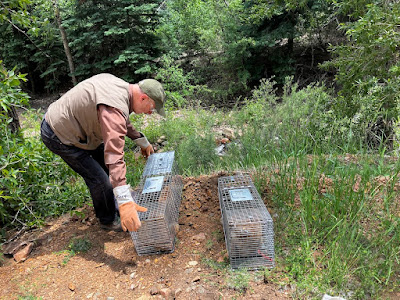 |
| The Northern Lights seen in eastern Colorado (Colorado Parks and Wildlife). |
This past week has seen the Northern Lights visible as far south as Texas Here in southern Colorado they were photographed in the San Luis Valley, at a latitude of 37° -- pretty far south,
I live surrounded by hills and ridges, with no view of a horizon anywhere except a hint to the northwest. On Wednesday, November 12, maybe the peak night, I walked Marco the dog after dark and saw nothing but stars. The following night, M. and I drove out to a place with a good view to the east and north, slightly interrupted by the distant lights of Pueblo -- and saw no aurora. Apparently we should have been much farther east, in say Otero or Bent counties, to get the full effect.
But that's OK. I had my "red sky at night" experience back in the Reagan Era, and it was a Cold War Baby's meltdown.
M. and I had been married a short time and were living in a converted summer cottage in Manitou Springs (740 sq. ft.!). Manitou is in a canyon as well, on the western edge of Colorado Springs. It's where the real mineral springs are flowing; the "Springs" in "Colorado Springs" is just real estate developer slop, circa 1875.
I had walked to a friend's house on Ruxton Avenue -- that is the side canyon that goes up to the Pikes Peak Cog Railway station. I came out well after dark, and the sky to the north was red!
I knew what it meant: Soviet missiles had hit Denver, and more were coming to Colorado Springs, which has lots of military targets. They would impact in seconds. I could never get home to see M. again.
If we were not all vaporized in the initial blast, we'd be stumbling through a nighttime hell of fire and radiation. This was the end.
Meanwhile, my rational mind was pounding on the door with both fists: "Dude! It's OK! Those are the Northern Lights! Dude! You're not about to die!"
After a second or two, the panic drained away. Yes, that was the Aurora borealis, and when I came home, she had been watching it too.
Down at the Colorado Spring Sun office, someone one had re-built the front-page layout to include a color (still rare then) photo of the lights in time to put it on the the presses for distribution the next morning.
I have seen many aurora photos on social media this week. No one has mentioned ICBMs or Mutual Assured Destruction. So that's an improvement.

















.jpeg)



